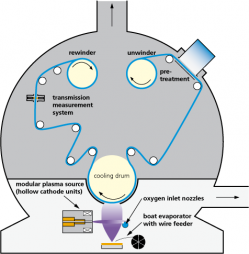SPECIAL EDITION: SHELF LIFE
Fraunhofer develops nano-thin coating to enhance shelf life

The prominent German research body, in the second instalment of our four-part special edition on shelf life, said the innovation has been possible thanks to the development of a plasma-assisted technology that allows for the creation of a transparent coating that is up to 100-times thinner than traditional layers such as silicon oxide and polyvinylidene chloride (PVdC).
It can also be used with a wider range of materials than was previously possible. The 10-nanometre aluminium oxide coating has the same barrier properties as existing films and preserves shelf-life by curbing the diffusion of oxygen and humidity inside the package.
The coating can be used in any food packaging but the most likely take up is in products where maintaining a crunchy texture is important- such as cereals or potato crisps, said the group.
Key advance
The key advance that enables this has been the development of vacuum-based roll to roll process that can coat almost 29,000m2 of foil per hour. The system can be utilised on films with a width of up to four metres for common materials such as PET but also with polypropylene (PP), biaxially-oriented polypropylene (BOPP) or polylactic acid (PLA).
The system is based on a commonly used roll coater platform in which aluminium is evaporated, Dr Nicholas Schiller told FoodProductionDaily.com. However, in contrast to existing technologies, the system does not evaporate aluminium or aluminium oxide but uses plasma in the evaporation zone to enhance the layer properties, he added.
Fraunhofer said the system provides “one of the best and most effective barriers against moisture for transparent foils in the packaging sector to date”.
Cost effective
It also offers a number of advantages, including efficiency and cost effectiveness, said the body. The nanometre-thin coating also helps conserve resources, since the barrier can be a hundred times thinner than traditional layers while retaining the same barrier properties. In addition, the new technique eliminates chlorine, a chemistry traditionally used in the production of polymeric barriers.
"The roll-to-roll barrier coating is suitable for a wide spectrum of polymeric materials. This makes the technology applicable and affordable for a broad range of products,” said Dr Schiller. “This established technology is considered to be more cost effective than electron beam or Plasma-enhanced chemical vapour deposition ( PECVD).”
Commercialisation
The technology was developed in partnership with two German companies – Vacuum Technology Dresden ISA. A third company, Applied Materials Inc, worked on commercialising the product.
“Applied Materials has successfully integrated Fraunhofer's plasma technology into a new line of industrial vacuum roll coaters,” said John Busch of the company’s web coating products division. “This involved the scaling up of key components and a joint effort to improve existing processes.”
The technology’s commercial viability has been proved after Latin America-based company Biofilm piloted the system at its plant in Mexico, said Fraunhofer.





